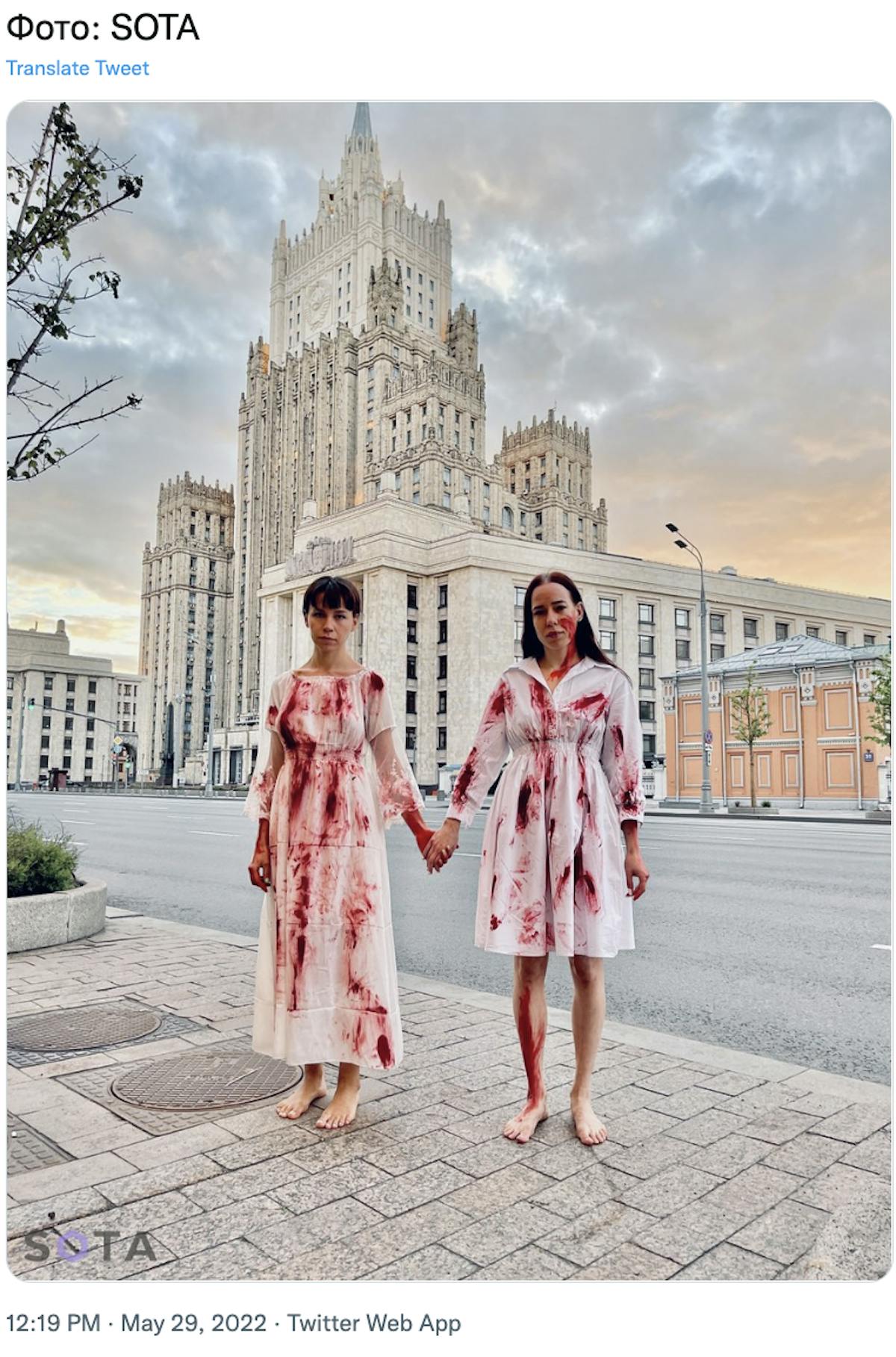The War’s Visual Waif: Loose Ends
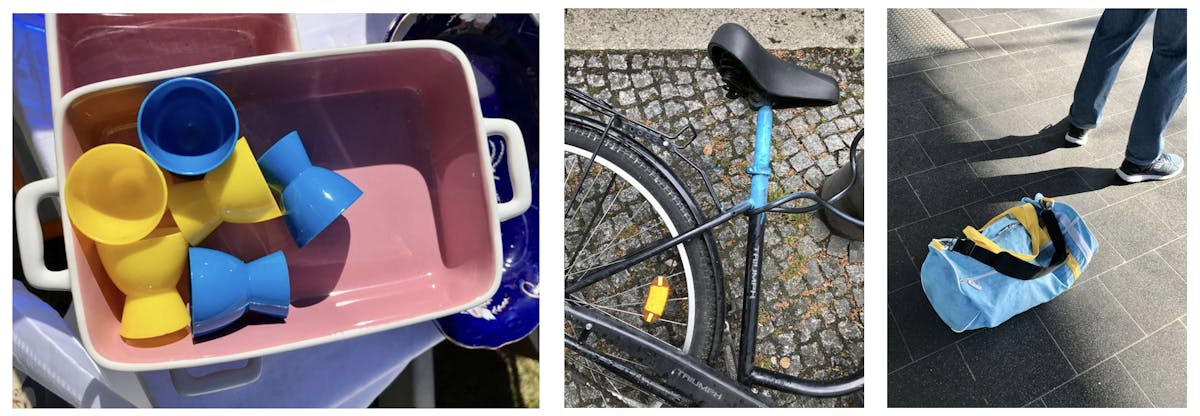

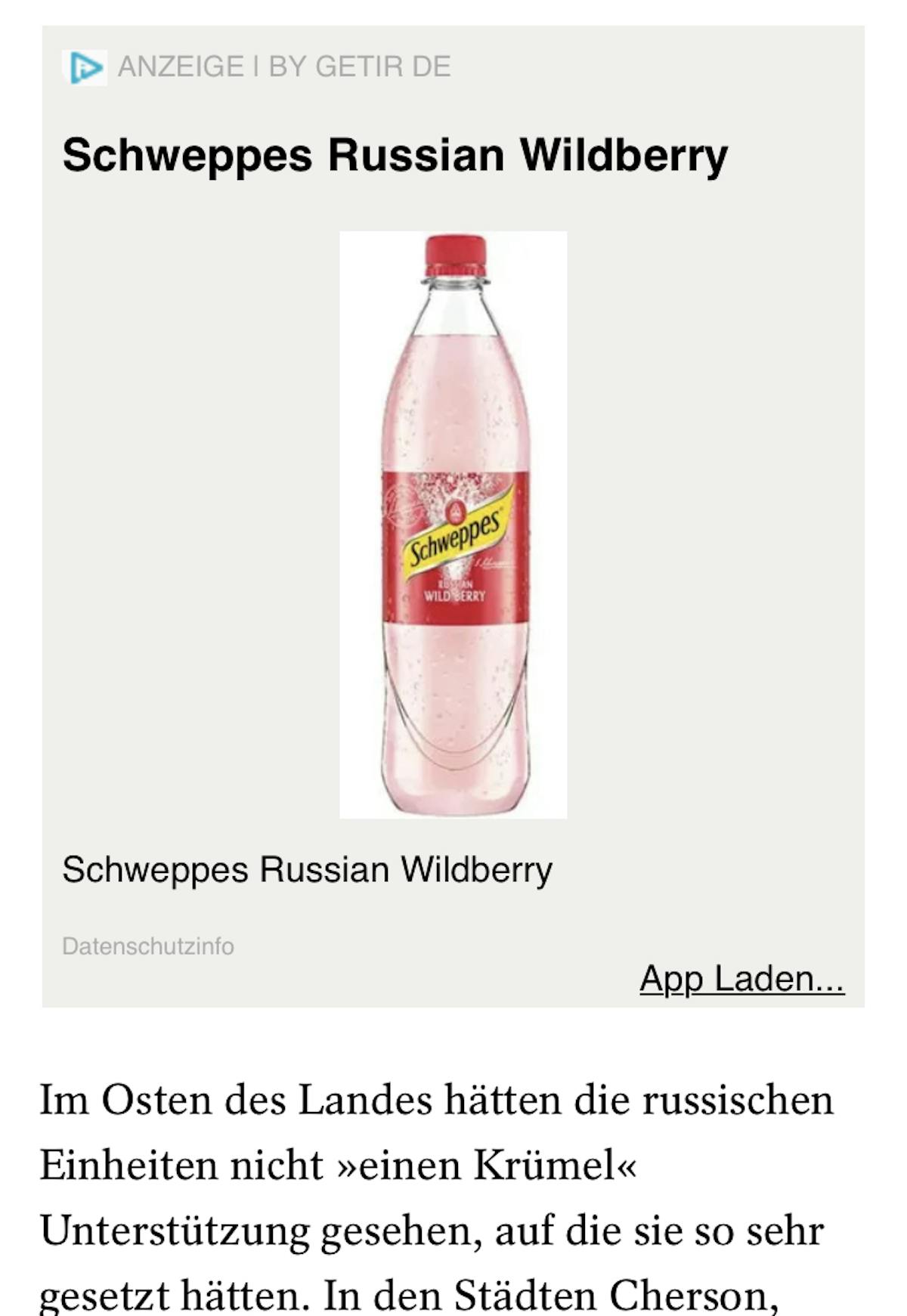
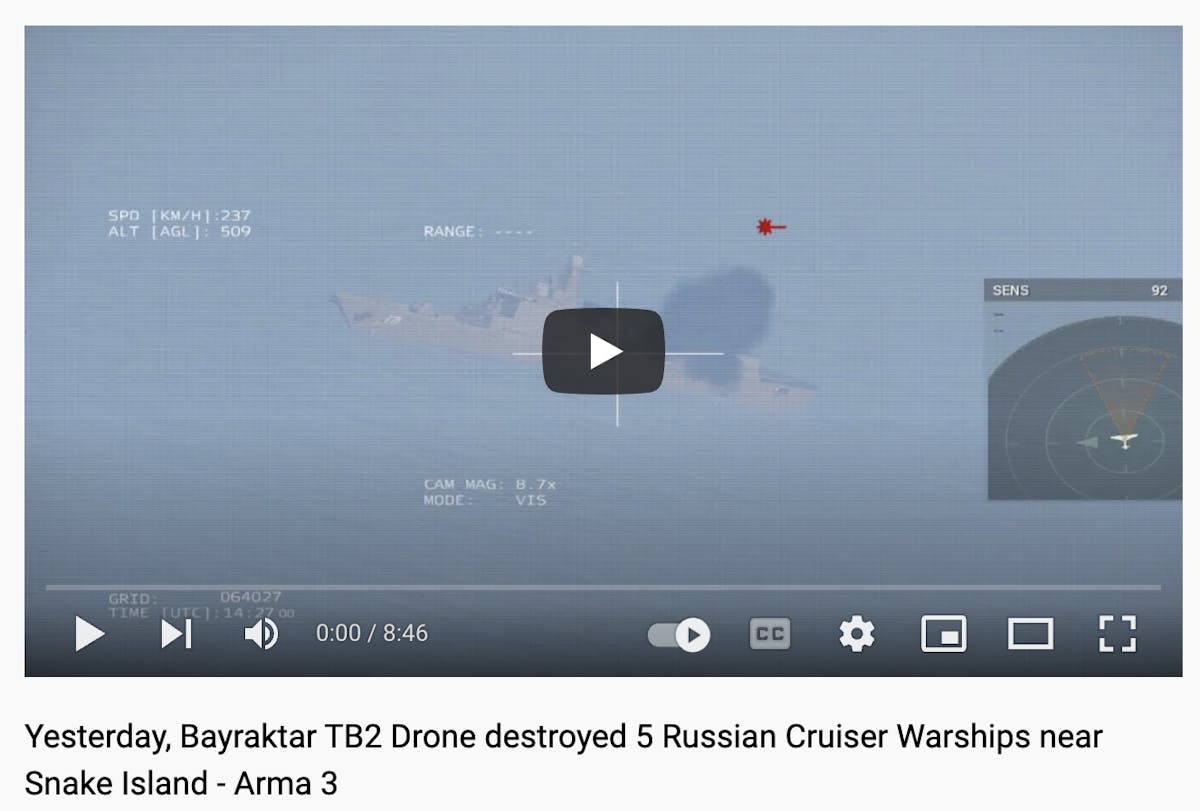
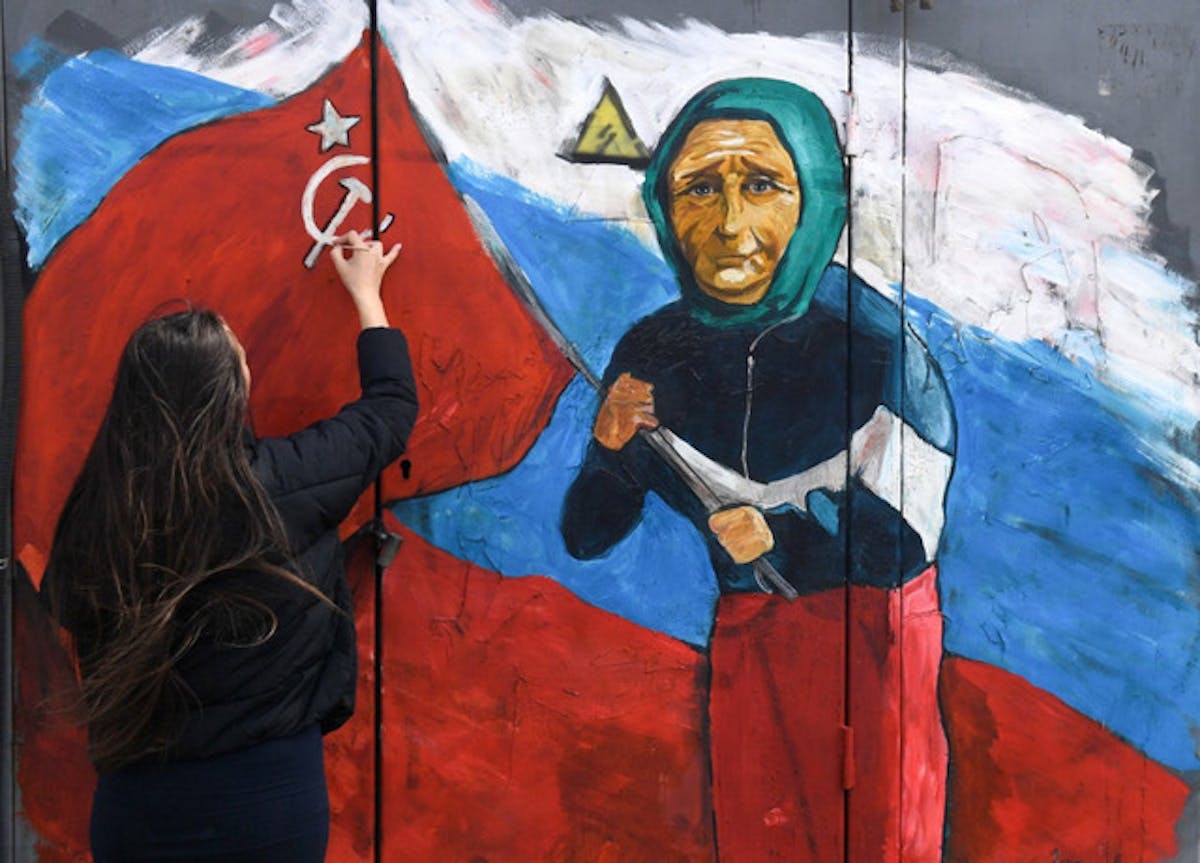

In May, two young Russian women protested against the war in front of the Ministry of Foreign Affairs in Moscow. A picture of the event shows Natalya Perova and Lyudmila Annenkova wearing seemingly bloodstained white dresses. The photo circulated on social media, prompting debate as to whether the two were photoshopped into the site or the picture was taken at sunrise when the streets were still empty. In any case it sent out a powerful message against the war. It is easily understood and needs neither a caption nor translation. As the Frankfurter Allgemeine Zeitung reported, Perowa and Annenkowa were detained for seven days and then released.
